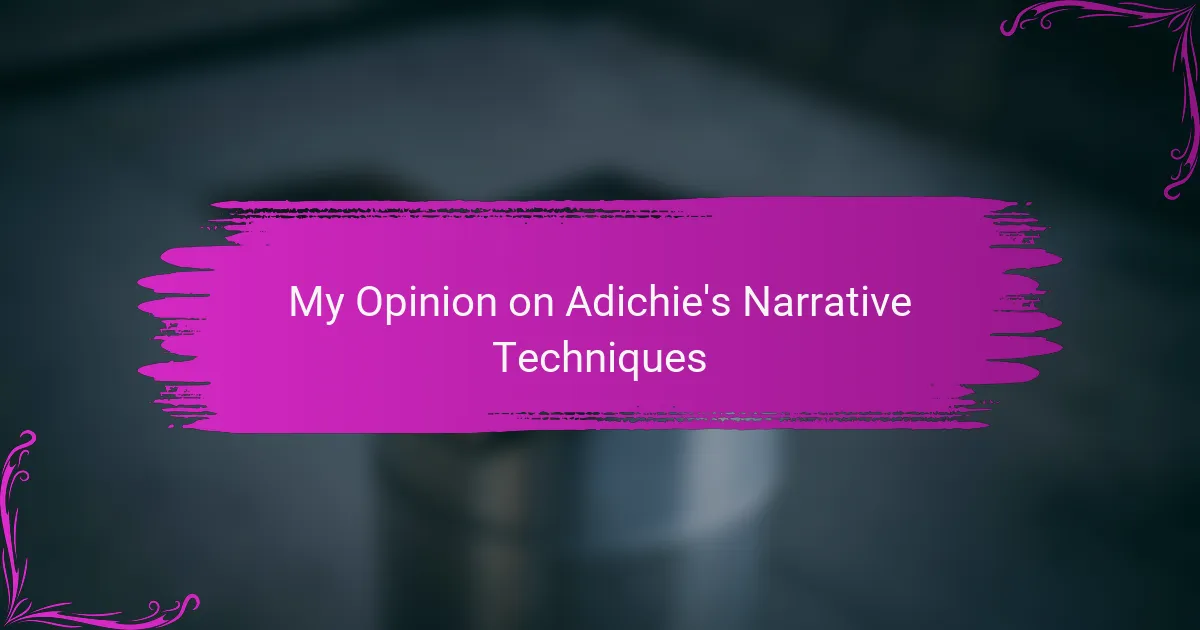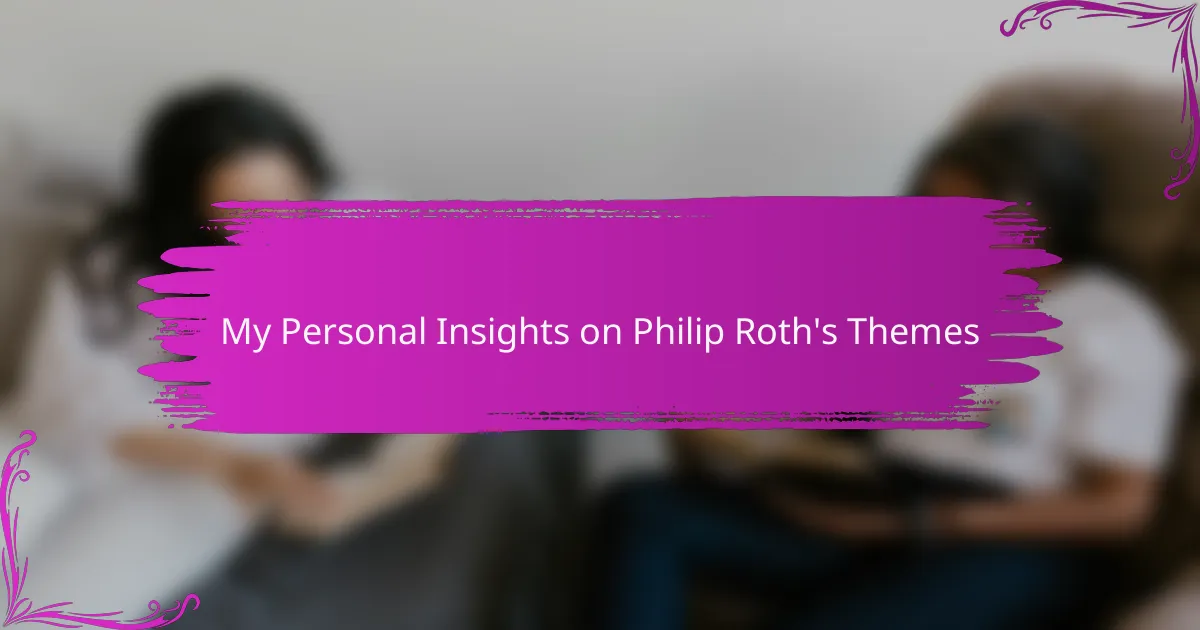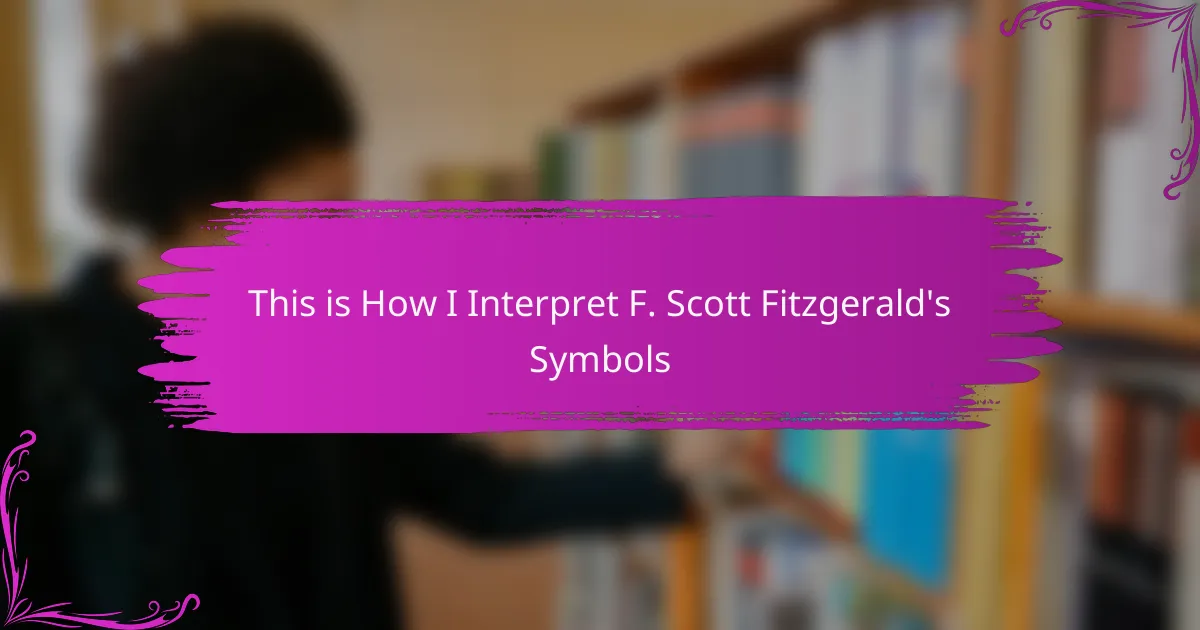Key takeaways
- Adichie’s narrative techniques, including multiple perspectives and rich character development, create a deep emotional connection between readers and characters.
- Her stories intricately blend personal experiences with cultural and historical contexts, encouraging readers to reflect on their own identities and societal issues.
- Adichie’s use of vivid imagery and non-linear storytelling enhances engagement, keeping readers captivated and provoking thought on complex themes.
- Through her work, she empowers voices and challenges stereotypes, fostering empathy and understanding across diverse narratives.
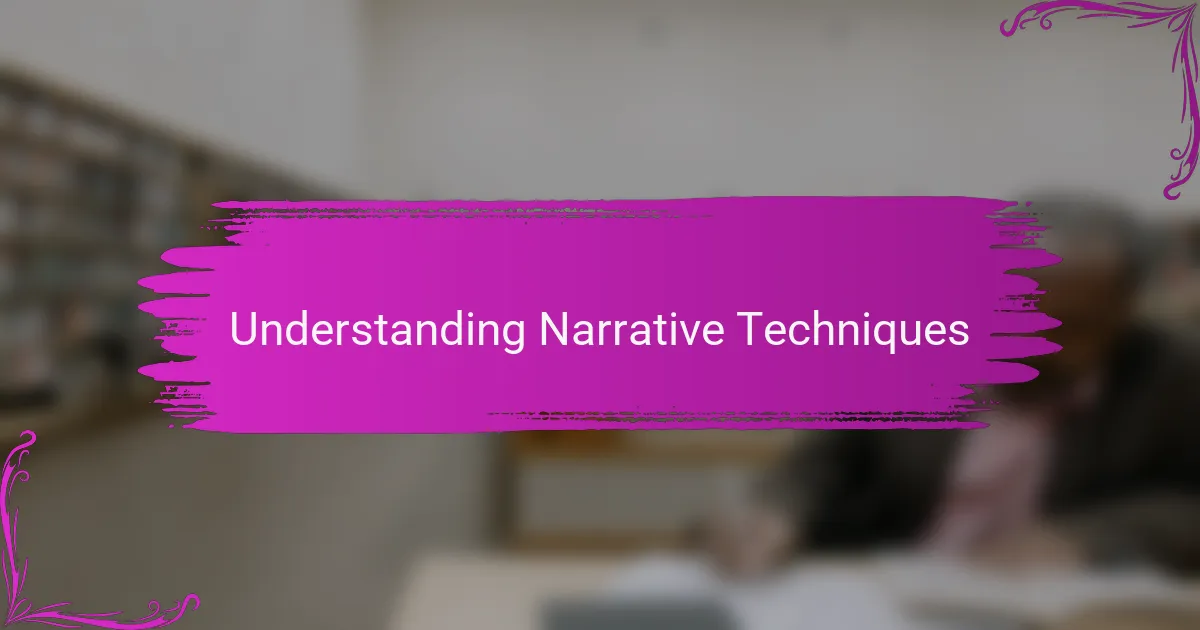
Understanding Narrative Techniques
Understanding narrative techniques is crucial to appreciating the depth of Chimamanda Ngozi Adichie’s storytelling. Her approach often intertwines personal and cultural narratives, which resonate deeply with readers. I remember the first time I read “Half of a Yellow Sun”; I was struck by how seamlessly she wove the personal experiences of her characters into the broader tapestry of Nigerian history. That connection made the story feel intimate and larger than life at the same time.
Adichie’s techniques often include:
- Multiple Perspectives: She employs various characters’ viewpoints, giving readers a multifaceted understanding of events.
- Rich Character Development: Each character is well-rounded and relatable, making it easy for readers to form emotional connections.
- Cultural Commentary: Her narratives reflect on societal issues, inviting readers to ponder deeper meanings.
- Vivid Imagery: Adichie uses descriptive language that paints striking visuals, immersing readers in her world.
- Non-linear Storytelling: This technique creates suspense and keeps readers engaged, allowing for unexpected revelations.
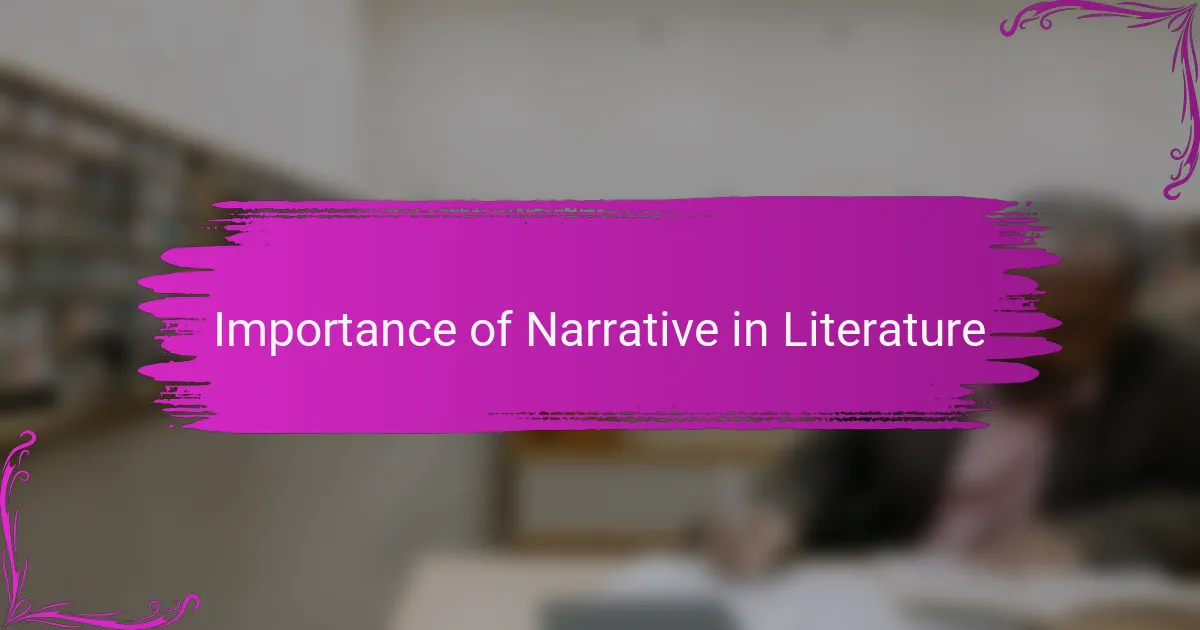
Importance of Narrative in Literature
Narrative plays a crucial role in literature as it shapes the way we connect with characters and their journeys. I remember the first time I immersed myself in a well-crafted story—it was like opening a door to another world. The emotions, challenges, and triumphs of the characters began to reflect my own experiences, creating an intimate bond that lingered long after I closed the book.
The importance of narrative in literature can be summarized through the following points:
- Engagement: A compelling narrative captivates readers and pulls them into the story.
- Understanding: It allows us to explore complex themes and issues, enhancing our comprehension of the human experience.
- Empathy: Through diverse narratives, we see the world from different perspectives, fostering compassion and understanding.
- Growth: Personal connections made through narrative inspire reflection and can lead to transformative insights.
- Cultural Preservation: Narratives often embody values, traditions, and histories, helping to preserve cultural identity.
Reflecting on these aspects helps me appreciate how stories can resonate on such profound levels.
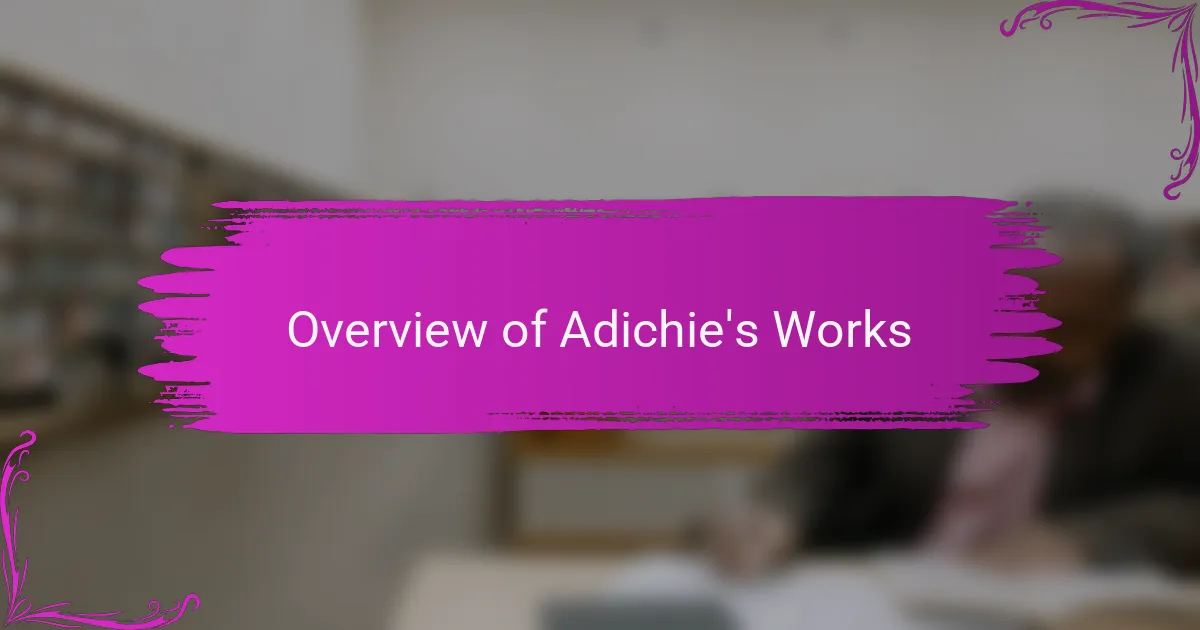
Overview of Adichie’s Works
Chimamanda Ngozi Adichie’s body of work is a rich tapestry that explores the complexities of identity, culture, and the nuances of human relationships. In novels like “Purple Hibiscus” and “Americanah,” she dives deep into personal and cultural landscapes, offering readers a window into the lives of her characters. I often find myself reflecting on the themes of home and belonging that resonate throughout her stories, prompting me to think about my own experiences and the place I call home.
One of the things I admire most about Adichie’s writing is her ability to balance personal narratives with broader societal issues. For instance, “Half of a Yellow Sun” not only tells the story of the Nigerian Civil War but also unpacks the emotional fallout of war on individual lives. How does one reconcile personal trauma with collective pain? That’s a question she invites us to consider, allowing for a more profound engagement with the narrative.
Adichie’s essays, such as “We Should All Be Feminists,” further showcase her skill in addressing contemporary issues with clarity and insight. Through her compelling prose, she encourages readers to examine their own beliefs and societal norms. This interplay between narrative and commentary is what makes her work so impactful—she challenges us to think critically and feel deeply, which is a hallmark of her literary genius.
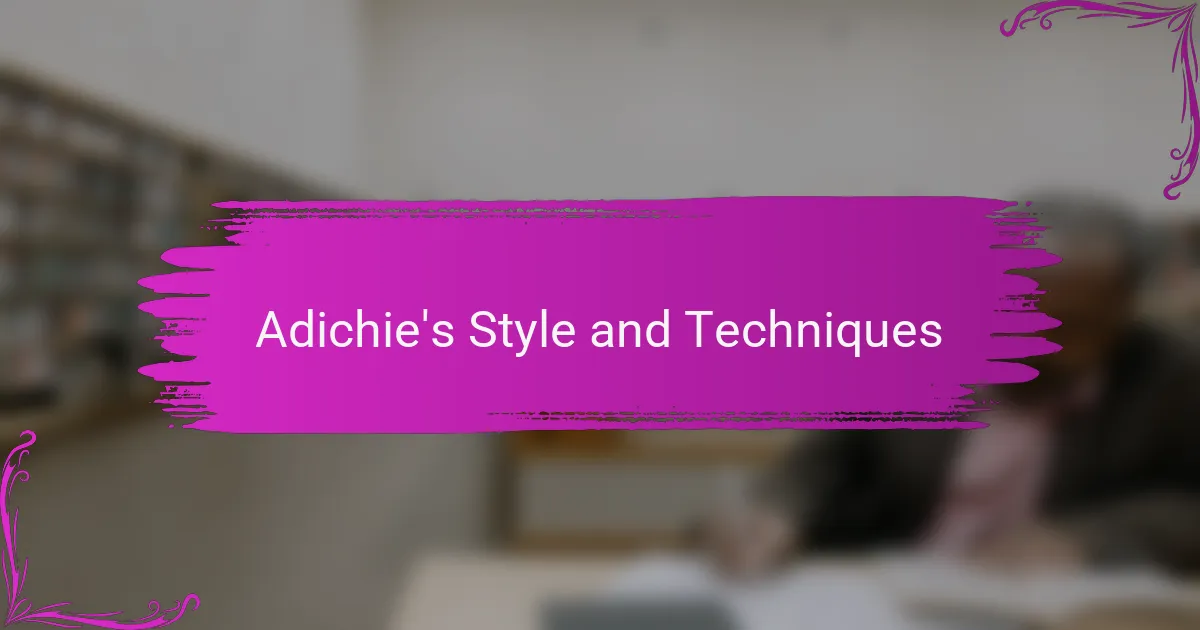
Adichie’s Style and Techniques
Adichie’s narrative style is an exquisite blend of personal reflection and cultural observation. In reading her work, I often find myself immersed in the richness of her characters, who feel almost real enough to reach out and touch. Her use of vivid imagery and eloquent prose draws readers in, allowing them to experience the full spectrum of her characters’ emotions and struggles, which resonated with me deeply when I first encountered her writing.
She employs several techniques that make her storytelling uniquely compelling:
- First-person perspective: This grants an intimate view into her characters’ thoughts, fostering a deep connection with the readers.
- Non-linear timelines: By weaving past and present, Adichie creates layers of meaning that encourage readers to reflect on how experiences shape identities.
- Cultural references: Her stories reflect Nigerian history and traditions, enriching readers’ understanding of diverse cultures.
- Vivid character development: Each character is multifaceted, allowing them to resonate with a broad audience.
- Humor and wit: These elements often lighten serious themes, making her work both impactful and engaging.
Through these techniques, I’ve found myself reflecting on my own identity and the multi-dimensional aspects of my own experiences, much like the characters she portrays.
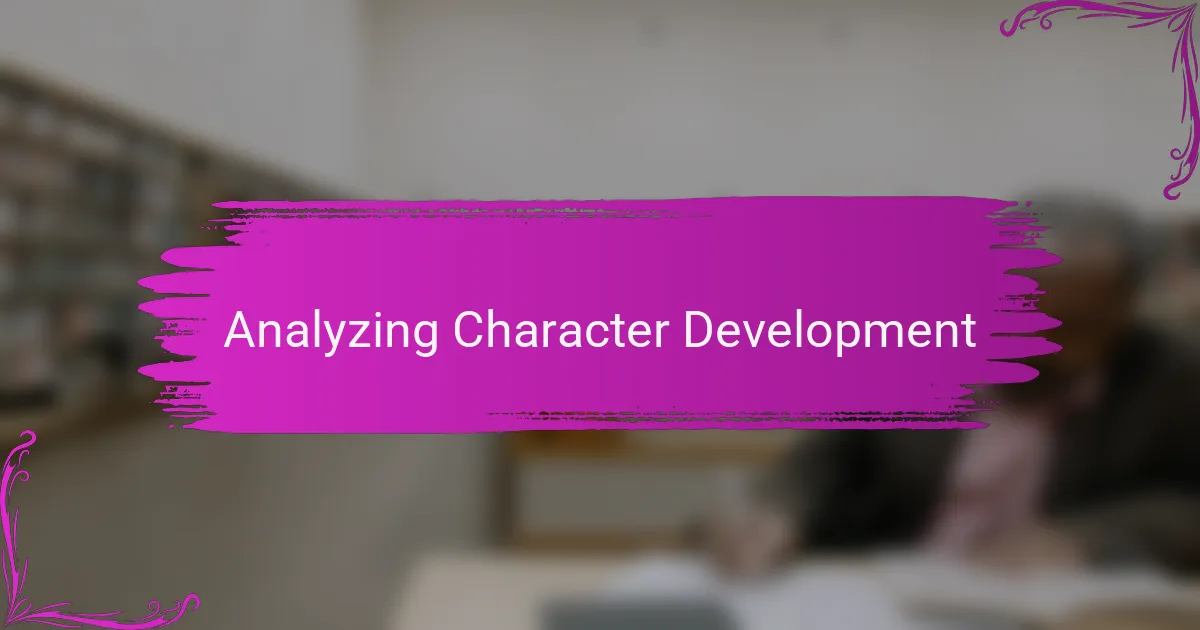
Analyzing Character Development
Adichie’s approach to character development is incredibly nuanced, often revealing deeper layers of her characters through their internal conflicts and relationships. I remember reading “Half of a Yellow Sun” and being struck by how Olanna and Odenigbo’s relationship unfolded. Their struggles during the Nigerian Civil War were not just about survival but also about understanding each other’s flaws and insecurities, which made their development feel authentic and relatable.
Moreover, Adichie’s characters often face cultural and personal dilemmas that challenge their identities. This complexity mirrors the real-world struggles many of us experience in finding our place in a rapidly changing society. Through her vivid storytelling, I find that the characters become strong vessels for exploring themes like love, loyalty, and loss, making their journeys memorable.
- Characters face significant internal and external conflicts.
- Relationships reveal vulnerabilities and growth.
- Emotional experiences reflect broader societal issues.
- Personal journeys resonate with readers’ own struggles.
- Diverse backgrounds enrich character perspectives, creating depth.
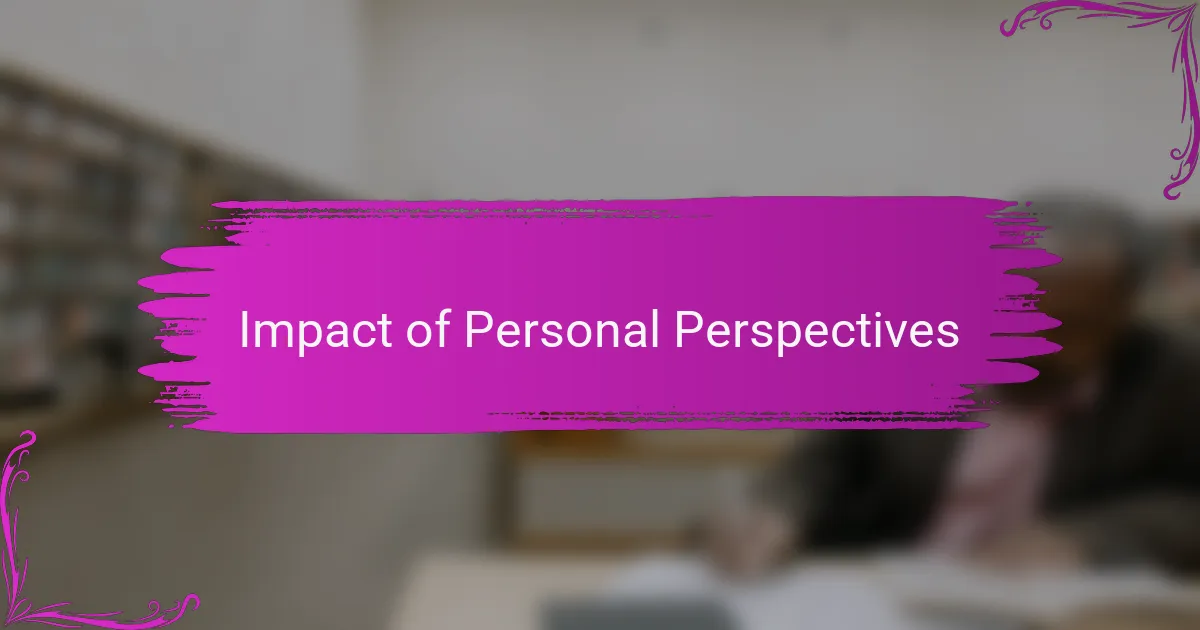
Impact of Personal Perspectives
One notable aspect of Chimamanda Ngozi Adichie’s narrative techniques is her skilled incorporation of personal perspectives, which fosters a deeper connection between the reader and the characters. I remember reading “Half of a Yellow Sun” and being struck by how Adichie weaves personal experiences with historical events. It made the backdrop of the Nigerian Civil War feel intimately familiar, almost as if I were witnessing the struggles through the eyes of the characters.
Adichie also exemplifies the power of storytelling as a means of amplifying individual voices. Through her characters, she challenges broad stereotypes and offers a rich tapestry of experiences that resonate with many readers. This technique not only enlightens but also encourages empathy, making us reflect on our own perspectives.
- Personal narratives create emotional depth, allowing readers to connect with characters on a human level.
- Adichie’s rich detail in character backstories helps to dismantle stereotypes by showcasing diversity within experiences.
- The blend of personal and political storytelling engages readers, prompting them to consider how their own lives intersect with broader societal issues.
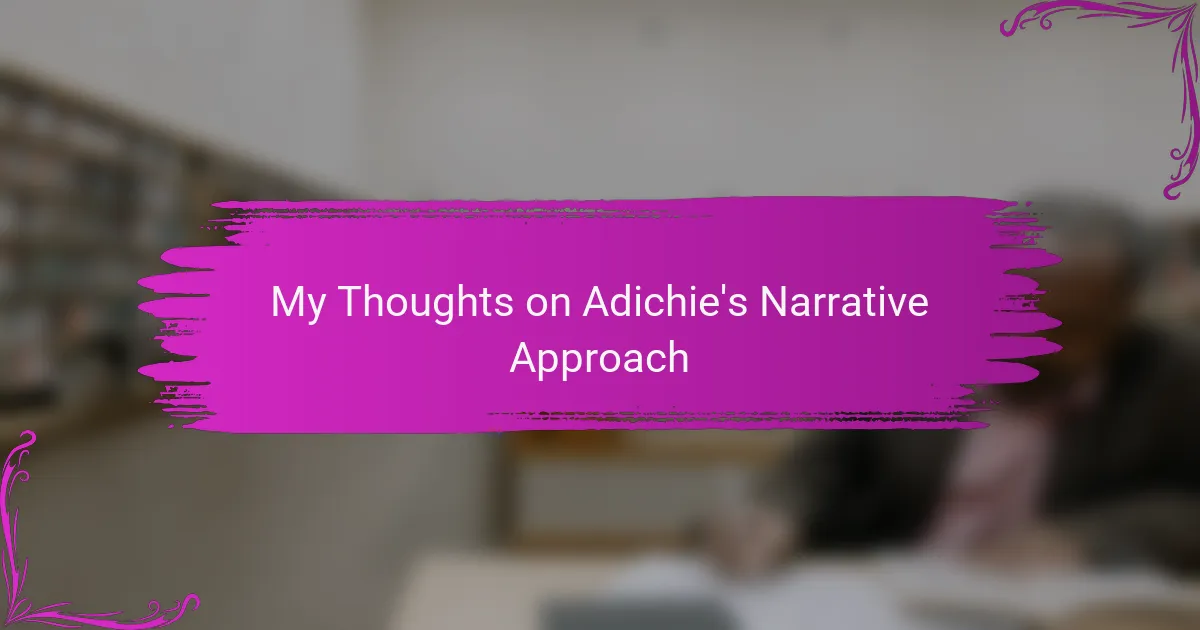
My Thoughts on Adichie’s Narrative Approach
When I think about Chimamanda Ngozi Adichie’s narrative techniques, I can’t help but admire her ability to weave rich, multi-layered stories that resonate deeply with her readers. Her use of multiple perspectives allows me to understand characters not just through their actions, but through their emotions and backgrounds, making them feel incredibly real. I remember reading “Half of a Yellow Sun” and being struck by how beautifully she portrays the complexities of love and war, offering insights that linger long after the last page.
Adichie’s storytelling is not only compelling but also empowering. It reminds me of how crucial it is to share our stories, as each voice adds to the larger narrative of human experience. This aspect of her writing fuels my passion for literature, as it highlights the importance of understanding different cultures and perspectives.
| Technique | Impact |
|---|---|
| Multiple Perspectives | Enhances character depth and empathy |
| Rich Descriptive Language | Creates vivid imagery and emotional connection |
| Historical Context | Grounds personal stories in larger societal issues |
